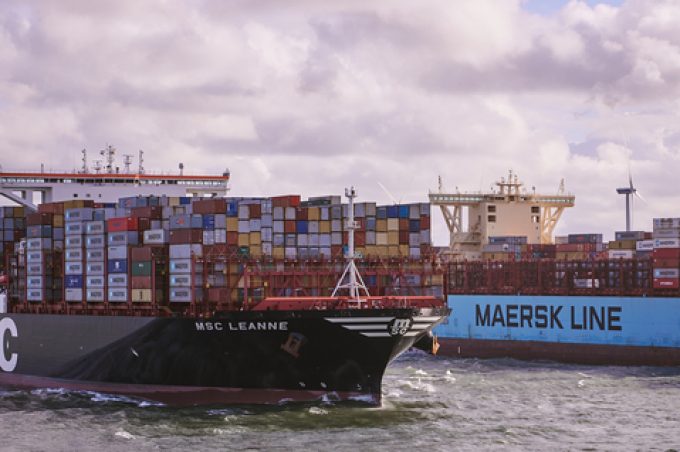Container spot rates have peaked as all major trades see prices fall
There was more evidence in this week’s container port freight markets that peak prices on ...
TFII: SOLID AS USUALMAERSK: WEAKENINGF: FALLING OFF A CLIFFAAPL: 'BOTTLENECK IN MAINLAND CHINA'AAPL: CHINA TRENDSDHL: GROWTH CAPEXR: ANOTHER SOLID DELIVERYMFT: HERE COMES THE FALLDSV: LOOK AT SCHENKER PERFORMANCEUPS: A WAVE OF DOWNGRADES DSV: BARGAIN BINKNX: EARNINGS OUTODFL: RISING AND FALLING AND THEN RISING
TFII: SOLID AS USUALMAERSK: WEAKENINGF: FALLING OFF A CLIFFAAPL: 'BOTTLENECK IN MAINLAND CHINA'AAPL: CHINA TRENDSDHL: GROWTH CAPEXR: ANOTHER SOLID DELIVERYMFT: HERE COMES THE FALLDSV: LOOK AT SCHENKER PERFORMANCEUPS: A WAVE OF DOWNGRADES DSV: BARGAIN BINKNX: EARNINGS OUTODFL: RISING AND FALLING AND THEN RISING

After successive weeks of blanking its AE1/Shogun Asia-North Europe loop, the 2M Alliance has finally confirmed that the service is to be suspended.
It is the first alliance service on the tradelane to be officially culled and is likely to be followed by the removal of more in the weeks to come as ocean carriers try to mitigate the impact of significantly reduced demand.
According to Alphaliner, the AE1/Shogun loop has been cancelled each week since early December by 2M partners Maersk and MSC. It had deployed 12 13,000 teu to 20,500 teu vessels, turning in 11 weeks, calling at Ningbo, Xiamen, Yantian, Tanjung Pelepas, Rotterdam, Bremerhaven, Rotterdam, Tanger Med, Salalah, Hong Kong and then back to Ningbo.
Alphaliner said Maersk and MSC had announced changes to the Asia-North Europe networks of three of their other five loops to compensate for the service termination. A call at Xiamen had been added to the rotation of the AE10/Silk loop, and the double Rotterdam call would be covered by a westbound call on the AE6/Lion loop and an eastbound call on the AE55/Griffin service.
The 2M’s decision to suspend the AE1/Shogun service rather than keep voiding each voyage will be welcomed by shippers, which have found it increasingly difficult to navigate their way around the separate blanking advisories.
Many have complained about the often last-minute blanking strategy of the shipping lines, leading to uncertainty in the supply chain for importers and exporters.
Indeed, it was a point acknowledged by Hapag-Lloyd’s CEO, Rolf Habben Jansen, last week during a virtual panel discussion, with shippers debating the post-pandemic challenges faced by the liner industry.
He argued that if demand visibility was seen to be weaker for a long period, such as is the case at present, “then it is better to restructure a service network than to constantly blank”.
“We are very much in discussion with our partners [in THE Alliance], as I totally understand the concern that we often get from customers, and I also believe that with the number of services that we have it is sometimes possible to combine two services into one, but still have a weekly sailing,” added Mr Habben Jansen.
Meanwhile, despite the current bleak outlook for trade growth, ocean carriers have not lost their appetite for investing their huge cash reserves into newbuild tonnage.
Japanese carrier ONE said today it had placed an order for 10 container vessels with a capacity of “over 13,700 teu” to be delivered in 2025 and 2026. The carrier said they would be ‘ready’ to be powered by methanol and ammonia and would be equipped with a bunker-saving bow windshield, something it has already retrofitted to two of its 20,000 teu vessels.
Last May, ONE ordered 10 vessels with a similar capacity for delivery in 2025.
Comment on this article